The Journey From Bullion Brokerage to Fighting Covid-19 Through Nano Technology
 Bullion.Directory precious metals news 12 February, 2021
Bullion.Directory precious metals news 12 February, 2021
By Spencer Campbell
Founder / CEO at SE Asia Consulting
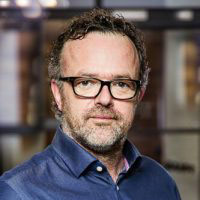 For this weeks Q&A I’m talking with Mike Greenacre.
For this weeks Q&A I’m talking with Mike Greenacre. Mike’s initial career was in the geophysical exploration industry, working in Africa, US, Middle East and Asia, beginning his trading and brokerage career in Switzerland, with an initial focus on steel and iron ore.
He then moved into precious metals trading & broking and subsequently spent more than ten years managing the global OTC metals business at ICAP.
In 2017 Mike ranked in the Exchange Invest top 1000 most influential people in market structure, and in the top 20 for FinTech – and he remains active in FinTech, Digital/Crypto innovation and Sustainable precious metals production and technology.
1. Can you give us a brief introduction about yourself?
My early days and background was initially mechanical engineering that took me into the geophysical exploration space where the natural creep of technology peeked my interest.
After several years “on crew” in mid east, US, Asia I ended up on settled research geophysical work in Switzerland. A bit of American football – NFL tryouts for a couple of teams and a serious non related accident I ended up broking bullion options in Zurich, but with a global client base and some more global travel – with better hotels and expenses….
I moved to London with that work, taking my young family – Swedish wife and two trilingual daughters with me. I have worked independently for myself for the last 9 years, run fintech/trading/broking companies with a focus on precious metals.
More recently in technology for SME sustainable gold and have helped develop a Silver nano particle sanitiser spray with durable efficacy against Covid 19 – which is getting busy.
2. You started your career in precious metals back in the mid 90’s when it was much less sexy than it is today, what was it like back then compared to now?
I started on the options desk at Premex in ZH, although a junior I had a bit of life under my belt and some unusual life experiences to share with clients.
There were just two broking companies in the space, brokerage rates were high, spreads wide and poorly marked, it was fairly simple to get trades away.
 I actually think there was a bit more mystique about the market, gold was low, poor derivatives, over hedging, Swiss gold scandal and the BoE pathetic sale had put gold on a low ebb.
I actually think there was a bit more mystique about the market, gold was low, poor derivatives, over hedging, Swiss gold scandal and the BoE pathetic sale had put gold on a low ebb.
But from there, the end of Gordon Browns & Ed Balls ill-conceived sales programme which drove gold to $255 it’s been on the up and up.
3. GFI & ICAP are known as a Global Brokers of OTC markets, how did GFI and ICAP cover the precious metals markets back then so we can better understand how the markets operated in that space?
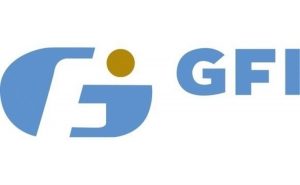 Both GFI and ICAP were and are regionally siloed companies, the gold business was replicated most of the bullion banks where we had a global footprint.
Both GFI and ICAP were and are regionally siloed companies, the gold business was replicated most of the bullion banks where we had a global footprint.
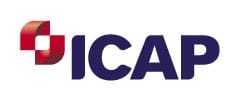 It wasn’t unusual for a client interest to originate in Asia and be passed to the London then US desks following the trading day. When I started at GFI we had London, NY & Sydney and when we got ICAP going the same thing, but Sydney died off as a centre – reduced mine hedging and bank and mine mergers.
It wasn’t unusual for a client interest to originate in Asia and be passed to the London then US desks following the trading day. When I started at GFI we had London, NY & Sydney and when we got ICAP going the same thing, but Sydney died off as a centre – reduced mine hedging and bank and mine mergers.
That was replaced by Singapore and HK as the focus of the Asian markets, China stepping up in the metals space.
4. You moved on from the broking world with a more entrepreneurial spirit, I had first come across you back when the announcement around the RFQ for the LBMA where Autilla Ltd was one of 8 shortlisted for the project, what can you tell us where you with this project?
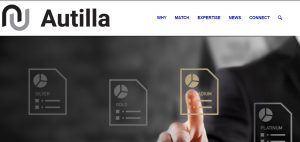 I started Autilla in 2013. The idea was to build an independent platform for the banks to transact OTC bullion business.
I started Autilla in 2013. The idea was to build an independent platform for the banks to transact OTC bullion business.
The world is moving to tech, but the bullion market still resists the trend.
The issues that the market faced were too attractive for us at Autilla to not get involved in. The metal fixings were the first RFP for us, we were the only company to demonstrate working technology during the RFP processes.
We got a bit dumped on by the LME, but stayed in the game. Second RFP was the LBMAi – which we won. Third was the metal custody / origin / provenance RFP. The LBMA opened a discussion they couldn’t handle, manage or settle. The market suffers now – the Swiss refiners are buying 900 tons a year of gold from a country with no gold mines and KYC/AML reputation you wouldn’t hold up as world leading. It’s an issue that threatens the terminal market for bullion globally.
We yet again demonstrated a working fully functional Mine to client, origin – provenance – identification chain of custody solution that worked on blockchain and would be relatively simple to integrate to current operations. We had a lot of input and support from miners, couriers, vaulters, refiners and interestingly the non-vaulting banks.
The LBMA decided on an RFP that to my mind killed on the enterprise in the market that we and one or two others had started. It’s still undecided – if you wanted to intentionally kill the initiative you couldn’t have done a better job. Get some people to opine on tech they don’t understand.
5. There are a number of products out there in the market making bold claims of blockchain providing provenance, where do you think a number of them fall down from your perspective?
None of them go back far enough in the supply chain, they either take the mine or refiners production at face value.
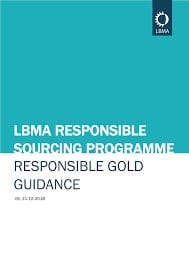 To my mind that’s where the issues are most likely to occur. Bar identification is an obsession to “allow the re-entry of bars into the LBMA network” – simplify the process – treat all external metal as scrap and have increased due diligence at refineries to allow it to re enter the market.
To my mind that’s where the issues are most likely to occur. Bar identification is an obsession to “allow the re-entry of bars into the LBMA network” – simplify the process – treat all external metal as scrap and have increased due diligence at refineries to allow it to re enter the market.
Other than localised VAT scams the issue is seldom the metal, its the funds/assets that were swapped one way or another for it.
It looks like we’ll end up with some disparate tech solutions to various parts of the supply chain.
People obsess about 50 cents here or there, when the terminal market collapses because the vaulting banks withdraw because there is no certainty of metal provenance in their vault the 50 cents for a solution would be a dream.
6. For the Blockchain you have in mind is that something you’d like to explore in the near future with any groups looking to better develop that side of the gold market?
Things have rapidly developed in the blockchain space, that’s if you need a blockchain. But, the tech is there, the methods to implement it is there.
To combine with an overhaul of the London good delivery and create a cleared OTC correctly governed and administered market place would be the way forward, that’s if the market values gold as anything more than a jewellery and a correlated punt.
How intrinsic is gold and is it needed in a modern digital adopting world? I would relish the chance to have input to a well supported and conceived project.
7. Whilst you have been developing more Fin Tech products of late via DigitalRFQ your roots are still firmly in the precious metals game, what can you tell us about your south American projects?
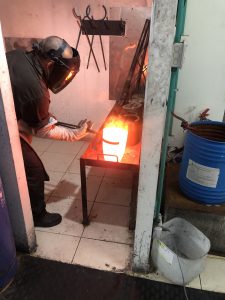 I have been working with a team on helping improve South American gold provenance and sustainability.
I have been working with a team on helping improve South American gold provenance and sustainability.
We have technology to increase the gold yield with the use of nano particles in the leeching process that significantly increase yields in refectory ores.
Also we look at bio solutions to cyanide contamination and treatment of tailing ponds.
We were making good progress until the pandemic really hit the mining sector.
8. What can the LBMA do to be more inclusive towards the Small and Artisanal miners around the world?
I think provenance is the answer, technology that allows them to directly demonstrate their production on a known platform and for them to compete for fair pricing.
This takes them out of the local cash aggregator space, allows them to bank correctly, pay local tax and assist the local economy and environment. The LBMA should be driving this.
The World Gold Council is also not doing a job on this either, it could be argued that its more their space to help the small-scale miners.
This is not a technology issue, it’s administration!
9. Lately you have been focused on a new product silver liquid called Nano Ag47, what can you tell us about that?
 Nano-Ag47 is derived from the gold mine yield increasing nano particle technology we developed.
Nano-Ag47 is derived from the gold mine yield increasing nano particle technology we developed.
We knew at the start of the pandemic that silver nano particles were particularly effective against pathogens, Viruses, bacteria and fungi.
Cost and accuracy of production has been an issue. We have developed a method to produce them accurately below 40nm which is the optimal size to sanitise and inhibit viruses including Covid 19.
We have a surfactant fluid that contains the suspended nano particles and can be sprayed or fogged onto surfaces, contact points and products and the product uniquely remains effective for a minimum of 72 hours from application.
We have tested to EU/UK standards and we are launching the product globally. Part of the whole keeping your hands clean is protecting the surfaces we touch.
10. For anyone that wants to follow you or connect for business opportunities where can they find you online?
I’m on LinkedIn: https://www.linkedin.com/in/mike-greenacre-a7658a1/
Alternatively my email is: mike@britemetals.com
Spencer Campbell


Spencer Campbell is a Director at SE Asia Consulting Pte Ltd, and provides key advisory services across the Mining and Precious Metal Refining Sectors, working with a number of leading gold refiners and processors.
This article was originally published here











 Material provided on the Bullion.Directory website is strictly for informational purposes only. The content is developed from sources believed to be providing accurate information. No information on this website is intended as investment, tax or legal advice and must not be relied upon as such. Please consult legal or tax professionals for specific information regarding your individual situation. Precious metals carry risk and investors requiring advice should always consult a properly qualified advisor. Bullion.Directory, it's staff or affiliates do not accept any liability for loss, damages, or loss of profit resulting from readers investment decisions.
Material provided on the Bullion.Directory website is strictly for informational purposes only. The content is developed from sources believed to be providing accurate information. No information on this website is intended as investment, tax or legal advice and must not be relied upon as such. Please consult legal or tax professionals for specific information regarding your individual situation. Precious metals carry risk and investors requiring advice should always consult a properly qualified advisor. Bullion.Directory, it's staff or affiliates do not accept any liability for loss, damages, or loss of profit resulting from readers investment decisions.

Leave a Reply